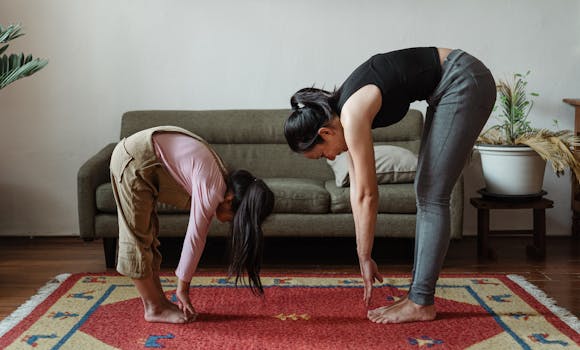Boost Your Mood: How Exercise Can Help Manage Anxiety and Depression
Takeaways: Exercise is a natural mood lifter, reducing symptoms of anxiety and depression. It boosts endorphins, enhances self-esteem, and offers a healthy way to cope with stress. Incorporating physical activity into your routine can be a game-changer for your mental health.
Hey there! If you’re anything like me, you’ve probably had those days that feel like a weight is pressing down on your chest. You know, the days when anxiety sneaks in like an uninvited guest and depression throws a blanket over your sunshine? Yeah, I get it. But here’s the good news: there’s a secret weapon that can help chase those clouds away — exercise!
Why Exercise Works Wonders on Your Mood
So, let’s dive right in! You might be wondering, “How on earth can sweating it out help me feel better?” Trust me, I’ve asked myself the same question. When I first heard about the mental health benefits of exercise, I was skeptical. But after giving it a shot, I realized it’s like magic! Here’s why:
- Endorphins Galore: When you exercise, your body releases endorphins, which are like little happiness bombs. These chemicals promote feelings of joy and euphoria. I’ve had those post-workout highs that make me feel like I can conquer the world!
- Stress Relief: Exercise is a fantastic way to blow off steam. After a tough workout, I often find that my worries seem smaller, and my mind is clearer. It’s like hitting the reset button on my brain.
- Boosting Self-Esteem: Let’s be real — when you exercise regularly, you start to notice changes in your body and energy levels. This boost in confidence can do wonders for your mental health. I remember the first time I completed a challenging workout; I felt like a superhero!
- Social Connection: Whether it’s joining a yoga class or hitting the gym with friends, exercise can foster connections. Surrounding yourself with supportive people can be incredibly uplifting.
Finding What Works for You
Now, I know that exercise isn’t a one-size-fits-all solution. Some folks love high-intensity workouts, while others prefer a leisurely stroll. The key is finding what resonates with you. Here are some ideas:
- Hit the Gym: If you thrive on structure, a gym membership could be your best friend. Group classes or personal trainers can keep you motivated.
- Outdoor Adventures: I can’t tell you how refreshing it is to get outside! Hiking, biking, or even gardening can lift your spirits while soaking up some sunshine.
- Dance It Out: Who said workouts have to be serious? Turn up your favorite playlist and dance like nobody’s watching. It’s a fun way to get your heart pumping!
- Mindfulness Through Movement: Yoga and Pilates not only strengthen your body but also provide mental clarity. I often find that they help me center my thoughts and calm my mind.
Remember, the goal isn’t to become a fitness expert overnight. It’s about finding joy in movement, no matter how small. The important part is to get your body moving and find what makes you feel good.
Incorporating Exercise Into Your Daily Routine
So, how do we make this happen? I know life can get busy, and sometimes squeezing in a workout feels impossible. But trust me, it’s all about making those small adjustments. Here are some practical tips:
- Set Realistic Goals: Start small! I began with just 10 minutes a day. Gradually, I increased my time as it became a part of my routine.
- Schedule It: Treat your workout like an important meeting. Block out time in your calendar, and don’t skip it!
- Make It Fun: Choose activities you enjoy. If it feels like a chore, you’re less likely to stick with it. Try new classes, sports, or outdoor activities!
- Buddy Up: Find a workout buddy! Having someone to share the journey with can keep you accountable and make it more enjoyable.
Incorporating exercise into your life doesn’t have to be a daunting task. With a bit of creativity and a sprinkle of commitment, you’ll be on your way to feeling better in no time.
FAQs
1. How often should I exercise to see mental health benefits?

2. What type of exercise is best for anxiety and depression?
There isn’t a one-size-fits-all answer. Aerobic exercises, strength training, yoga, and even walking can be great. It’s about finding what you enjoy and what works for you.
3. Can I exercise if I’m feeling really low?
Yes! Even a short walk can help. Listen to your body and do what feels manageable. Sometimes just getting moving is the hardest part.
4. How long before I see results in my mood?
Many people report feeling better after just one workout! However, consistency is key, and the positive effects can be more pronounced with regular activity.
5. What if I don’t have time to exercise?
Look for opportunities to move throughout your day. Take the stairs, walk during lunch, or do quick body-weight exercises at home. Every bit adds up!






